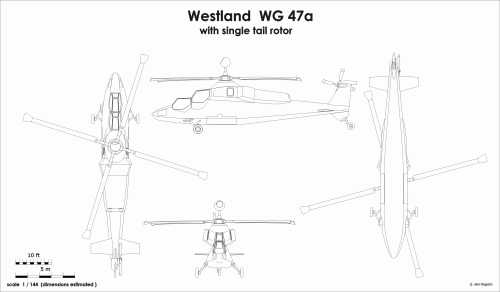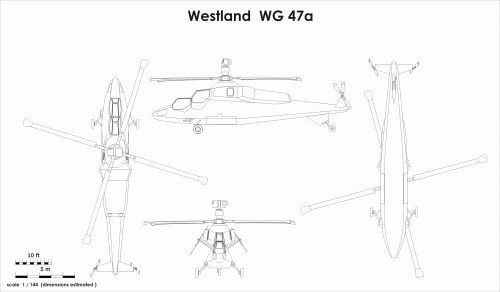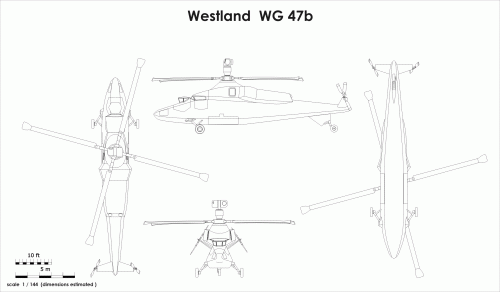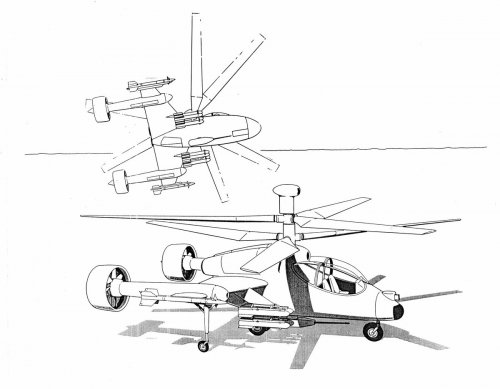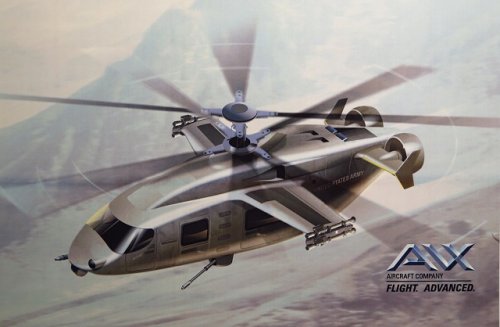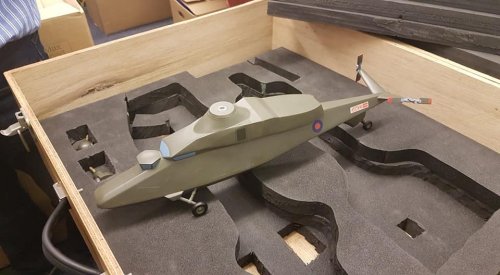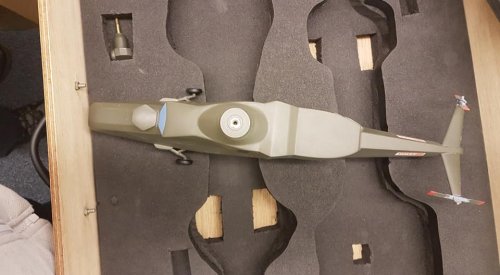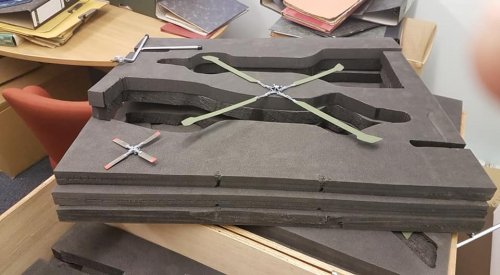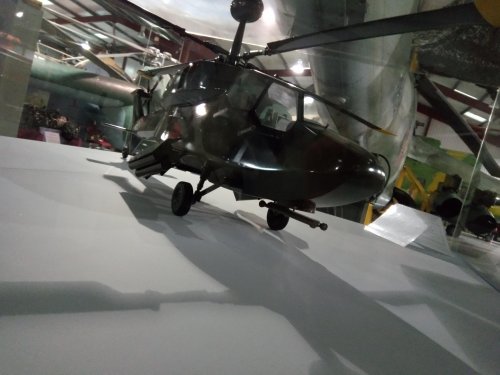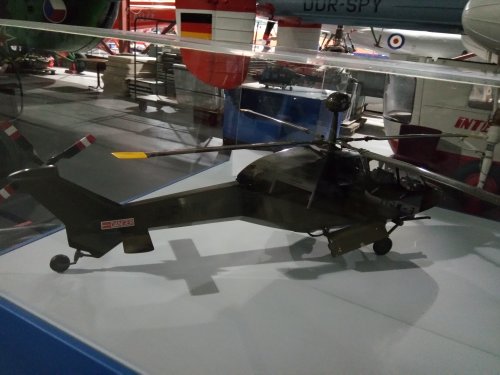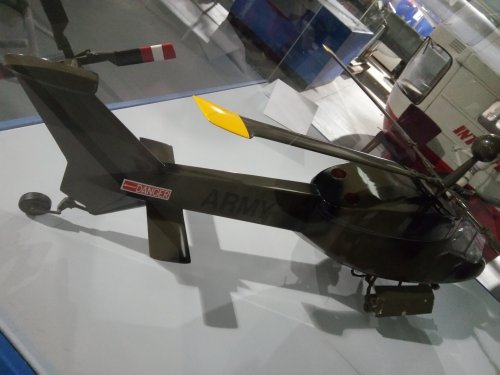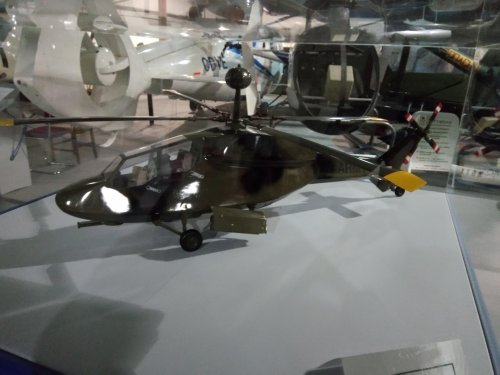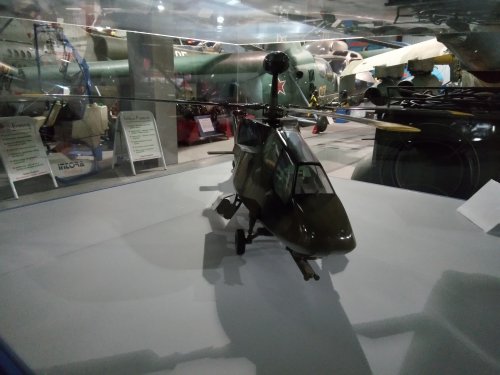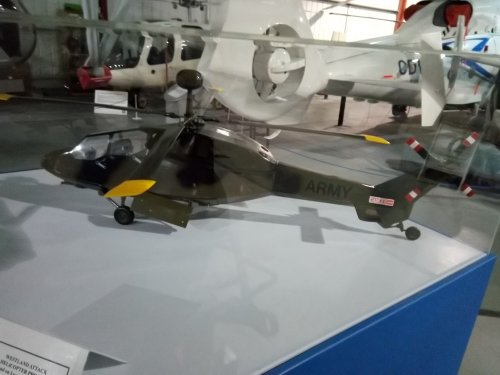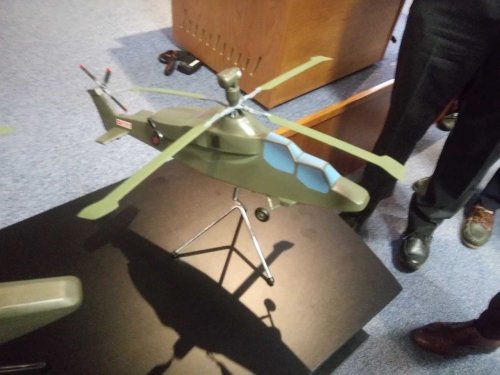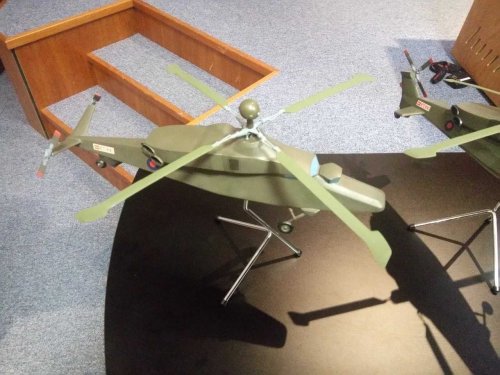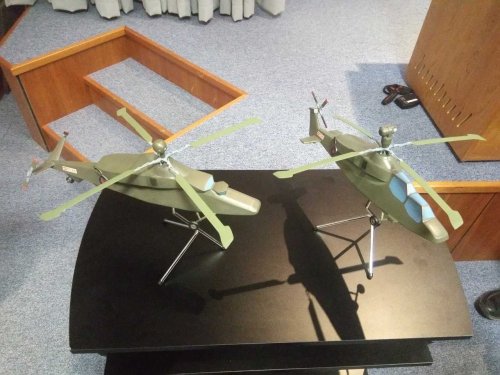You are using an out of date browser. It may not display this or other websites correctly.
You should upgrade or use an alternative browser.
You should upgrade or use an alternative browser.
Westland WG.44 - WG.47 1980s stealth helicopter projects
- Thread starter Mike Pryce
- Start date
- Joined
- 11 March 2006
- Messages
- 8,622
- Reaction score
- 3,775
Silencer1
That now I am the Ruler of the Queen's Navee!
- Joined
- 3 August 2009
- Messages
- 897
- Reaction score
- 582
Dear Jemiba!
Thanks for the nice drawings - very impressive!
Although, I have some doubts in the image of tail rotors in helicopter version with V-tail.
In my humble opinion, they should rotate in the same direction - and models' photos prove this.
On you drawing I see the tail rotors, that rotates in opposite directions.
I would be greatly appreciate, if you check this feature.
Thanks for the nice drawings - very impressive!
Although, I have some doubts in the image of tail rotors in helicopter version with V-tail.
In my humble opinion, they should rotate in the same direction - and models' photos prove this.
On you drawing I see the tail rotors, that rotates in opposite directions.
I would be greatly appreciate, if you check this feature.
- Joined
- 11 March 2006
- Messages
- 8,622
- Reaction score
- 3,775
Yep, you're right, on the top and underside view, they would be turning in opposite directions.
In the side view, it's ok. Was the habit of simply mirroring .. without further thinking. :-[
Will be changed ASAP, sorry and thanks for the clue !
In the side view, it's ok. Was the habit of simply mirroring .. without further thinking. :-[
Will be changed ASAP, sorry and thanks for the clue !
Silencer1
That now I am the Ruler of the Queen's Navee!
- Joined
- 3 August 2009
- Messages
- 897
- Reaction score
- 582
Jemiba said:Yep, you're right, on the top and underside view, they would be turning in opposite directions.
In the side view, it's ok. Was the habit of simply mirroring .. without further thinking. :-[
Will be changed ASAP, sorry and thanks for the clue !
No reasons for excuses, dear Jemiba!
You accomplished quite daring task, when combine all the avaiable information in this 3 (three!) detailed drawings.
And minor errors would be fixed later.
Keep up the good work!
- Joined
- 11 March 2006
- Messages
- 8,622
- Reaction score
- 3,775
The drawings of the versions with T-tail and twin tail rotors are corrected,
please check and tell me, if there's still something wrong.
Thanks again for your sharp eye, Silencer !
please check and tell me, if there's still something wrong.
Thanks again for your sharp eye, Silencer !
Silencer1
That now I am the Ruler of the Queen's Navee!
- Joined
- 3 August 2009
- Messages
- 897
- Reaction score
- 582
Dear Jemiba!
Thanks for your kind words, I'm really appreciate it!
You made drawings of 3 different version of quite unusual helicopter, and they all looks very convincing - and artistic in the same time.
Thank you for efforts to prepare them, using limited set of images and sources! In such cases minor imperfections (or even unintentional errors) couldn't diminished the overall good result.
By the way, could anyone remember any other helicopter with two separated tail rotors - build or projected?
In my humble opinion, in this project, Westland' engineers demonstrate a wide variety of ideas, combined in one concept.
Thanks for your kind words, I'm really appreciate it!
You made drawings of 3 different version of quite unusual helicopter, and they all looks very convincing - and artistic in the same time.
Thank you for efforts to prepare them, using limited set of images and sources! In such cases minor imperfections (or even unintentional errors) couldn't diminished the overall good result.
By the way, could anyone remember any other helicopter with two separated tail rotors - build or projected?
In my humble opinion, in this project, Westland' engineers demonstrate a wide variety of ideas, combined in one concept.
IIRC that's a Merlin precursor.TsrJoe said:Westland WG.38 (WG.34 development ? NH.90 precursor ?) https://hushkit.net/2018/01/18/britains-secret-stealth-helicopter-other-exotic-westland-projects/
- Joined
- 21 December 2006
- Messages
- 1,242
- Reaction score
- 1,084
- Joined
- 21 December 2006
- Messages
- 1,242
- Reaction score
- 1,084
It looks like a lot of gearboxes!
- Joined
- 3 September 2006
- Messages
- 1,474
- Reaction score
- 1,465
What would be the point of the coaxial rotors, when the props could supply all the useful anti-torque already?
Of course the diameter can be less, but the added complexity is sure to offset that.
Of course the diameter can be less, but the added complexity is sure to offset that.
- Joined
- 21 December 2006
- Messages
- 1,242
- Reaction score
- 1,084
dan_inbox said:What would be the point of the coaxial rotors, when the props could supply all the useful anti-torque already?
Of course the diameter can be less, but the added complexity is sure to offset that.
Coolness?
Or similar to the AVX: http://www.avxaircraft.com/
"With its unique blend of coaxial rotors and dual ducted fans, the AVX answer to FVL offers greater aerodynamic and fuel efficiency, speed, range, payload, hover out of ground effect (HOGE), and the ability to operate in hotter temperatures and at higher altitudes than any of today's conventional helicopters."
Attachments
_Del_
I really should change my personal text... Or not.
- Joined
- 4 January 2012
- Messages
- 1,315
- Reaction score
- 1,807
dan_inbox said:What would be the point of the coaxial rotors, when the props could supply all the useful anti-torque already?
Of course the diameter can be less, but the added complexity is sure to offset that.
You don't get all the assymetric lift at speed with coaxial rotors. Plus smaller diameter, which also means lower tip speed. Possibly a lower RCS. You don't have to program flightcontrols for varying amounts of assymetric thrust from the props throughout the flight envelope (which would also add mechanical complexity) don't have to have the props running and needlessly taking engine power while in a hover. There are probably more.
- Joined
- 18 October 2006
- Messages
- 4,203
- Reaction score
- 4,889
Harrier said:A Westland pre-feasibility study for the UK 1980s attack helicopter, via @GbhvfRon on Twitter.
Little Nellie all grown up.
Seriously though have to agree with Harrier.
Harrier said:It looks like a lot of gearboxes!
Yeah! but now you got me thinking on how to build a model of it (or something along those lines)
- Joined
- 27 December 2005
- Messages
- 17,712
- Reaction score
- 26,173
WG.47b model is still in good condition at the Leonardo Archives. They are seeking assistance from Dave Evans (Whirlybird Models) with the rotors, which keep breaking.
From British Aircraft Designs & Prototypes group on Facebook:
From British Aircraft Designs & Prototypes group on Facebook:
Attachments
- Joined
- 21 December 2006
- Messages
- 1,242
- Reaction score
- 1,084
- Joined
- 21 December 2006
- Messages
- 1,242
- Reaction score
- 1,084
- Joined
- 1 April 2006
- Messages
- 11,364
- Reaction score
- 10,150
- Joined
- 21 December 2006
- Messages
- 1,242
- Reaction score
- 1,084
Thanks flateric. I work there, but had missed this! I shall be going.
- Joined
- 21 December 2006
- Messages
- 1,242
- Reaction score
- 1,084
Those things aren't allowed but I will see what can be said after.
- Joined
- 3 June 2006
- Messages
- 3,094
- Reaction score
- 3,949
Probably this lecture will be published in a future podcast episode. Hopefully soon is the year. 
Link: https://www.aerosociety.com/events/catch-up-on-events/video-audio-archive/
Soundcast:
Link: https://www.aerosociety.com/events/catch-up-on-events/video-audio-archive/
Soundcast:
- Joined
- 21 December 2006
- Messages
- 1,242
- Reaction score
- 1,084
The talk had several interesting points, but no fundamentally new revelations. Lots of details that were new though.
Most interesting to me was the WG.42 from 1982 which was small, single-engined and intended to be simple to maintain at the front line. The crew sat side-by-side in titanium 'dustbins'. Although different in every way, it reminded me of the Cierva Weir W.9 for some reason.
The Army requirement moved away from small and light to big and 'capable'. This also meant expensive so the WG.44 was put forward with a WG.30 rotor head to save costs. Signatures were lower but not by enough.
Tonal and WG.47 were the answers to ever increasing requirements. The latter had a very complex IR suppression system. The twin tail rotors reduced RCS and also allowed pilots to stop the aircraft rapidly by pulling the nose up to 45 degrees without ballooning or overspeeding the rotors. This was seen as a useful tactic.
The odd 'low glint' canopy (originally on the WG.42) was hated by pilots who tried the mock-up. It was made bigger as a result, but the rear gunner had only limited side vision, although their cockpit was 8 feet wide!
Overall WG.47 seemed a bit problematic. Very heavy, the most drag of any design ever tested by Westland, and with non-retracting gear, no gun and other limitations it seems it was very much a work in progress when it ended.
Comanche seemed better thought through, and the speaker spoke favourably about it compared to WG.47, but it was hugely expensive.
I asked permission to take pictures of some models on display at the end, which the speaker gave. Note the rotors are from a Lynx model, not the all-new 'stealth' blades and faired rotor head of the actual design.
Most interesting to me was the WG.42 from 1982 which was small, single-engined and intended to be simple to maintain at the front line. The crew sat side-by-side in titanium 'dustbins'. Although different in every way, it reminded me of the Cierva Weir W.9 for some reason.
The Army requirement moved away from small and light to big and 'capable'. This also meant expensive so the WG.44 was put forward with a WG.30 rotor head to save costs. Signatures were lower but not by enough.
Tonal and WG.47 were the answers to ever increasing requirements. The latter had a very complex IR suppression system. The twin tail rotors reduced RCS and also allowed pilots to stop the aircraft rapidly by pulling the nose up to 45 degrees without ballooning or overspeeding the rotors. This was seen as a useful tactic.
The odd 'low glint' canopy (originally on the WG.42) was hated by pilots who tried the mock-up. It was made bigger as a result, but the rear gunner had only limited side vision, although their cockpit was 8 feet wide!
Overall WG.47 seemed a bit problematic. Very heavy, the most drag of any design ever tested by Westland, and with non-retracting gear, no gun and other limitations it seems it was very much a work in progress when it ended.
Comanche seemed better thought through, and the speaker spoke favourably about it compared to WG.47, but it was hugely expensive.
I asked permission to take pictures of some models on display at the end, which the speaker gave. Note the rotors are from a Lynx model, not the all-new 'stealth' blades and faired rotor head of the actual design.
Attachments
- Joined
- 21 December 2006
- Messages
- 1,242
- Reaction score
- 1,084
Looking at earlier pictures in this thread I think the 'WG44' model is actually WG.45. This was not mentioned however.
- Joined
- 21 December 2006
- Messages
- 1,242
- Reaction score
- 1,084
No, because they were canted.
Similar threads
-
-
-
Westland remotely-piloted helicopters (RPH)
- Started by Stargazer
- Replies: 7
-
-

